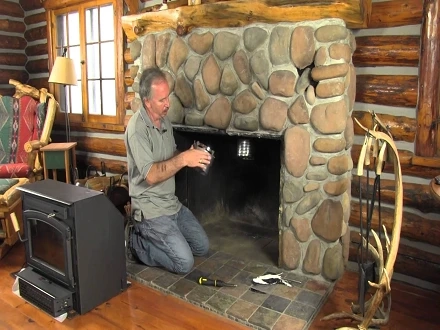In the realm of fire safety, the installation of fire lines stands as one of the fundamental pillars of defense against catastrophic blazes. Whether in residential, commercial, or industrial settings, the proper installation of fire lines is paramount to ensuring the safety of lives and properties. However, this task demands more than just laying down pipes and hoses; it requires meticulous planning, adherence to regulations, and the application of best practices and techniques. In this comprehensive guide, we delve into the intricacies of mastering the art of fire line installation, offering insights into the best practices and techniques that every fire safety professional should embrace.
Understanding Fire Lines
Before delving into the installation process, it is imperative to grasp the significance of fire lines in fire suppression systems. Fire lines, also known as fire mains, serve as the primary conduit through which water or other extinguishing agents are delivered to extinguish fires. These lines typically consist of pipes, valves, fittings, and hydrants strategically positioned to provide optimal coverage within a building or a property. Fire lines are categorized based on their application, with classifications ranging from residential sprinkler systems to high-pressure industrial fire mains.
Planning and Design
The foundation of a successful fire line installation lies in meticulous planning and design. Prior to commencing any installation work, it is crucial to conduct a comprehensive assessment of the property and its fire safety requirements. This assessment should take into account factors such as building size, occupancy type, fire hazards, water supply availability, and regulatory requirements.
Once the assessment is complete, the next step involves designing a fire line system tailored to the specific needs of the property. This entails determining the appropriate pipe sizes, selecting suitable materials, positioning valves and hydrants, and establishing the layout of the system. Collaboration with architects, engineers, and local fire authorities is essential to ensure compliance with building codes and standards.
Material Selection
Selecting the right materials is paramount to the longevity and effectiveness of a fire line system. Common materials used in fire line installations include steel, copper, and various types of plastics such as PVC and CPVC. Each material offers its own set of advantages and considerations in terms of cost, durability, corrosion resistance, and ease of installation.
Steel pipes, for instance, are renowned for their strength and durability, making them well-suited for high-pressure applications. Copper pipes, on the other hand, are prized for their corrosion resistance and longevity, albeit at a higher cost. Plastic pipes such as PVC and CPVC are lightweight, easy to install, and resistant to corrosion, making them ideal for residential and low-pressure applications.
It is important to consult with industry experts and adhere to local building codes when selecting materials for fire line installations. Factors such as temperature, pressure, water quality, and soil conditions should also be taken into consideration to ensure the longevity and reliability of the system.
Installation Techniques
The installation of fire lines demands precision and attention to detail to ensure optimal performance and compliance with regulations. While specific techniques may vary depending on the type of system and materials used, there are several universal best practices that apply to all fire line installations:
Proper Pipe Sizing
Selecting the appropriate pipe size is crucial to maintaining adequate water flow and pressure throughout the system. Factors such as occupancy type, sprinkler head density, and hydraulic calculations should be considered when determining pipe sizes.
Adequate Support and Bracing
Proper support and bracing of pipes are essential to prevent sagging, misalignment, and structural failure. Pipes should be securely fastened to walls, ceilings, and structural members using appropriate hangers, clamps, and supports.
Leak Prevention
Leak prevention is paramount in fire line installations to ensure the integrity of the system. Pipes should be properly jointed and sealed using approved methods such as welding, threading, or solvent cementing. Pressure testing should be conducted to identify and rectify any leaks before commissioning the system.
Valve and Hydrant Placement
Valves and hydrants should be strategically positioned to facilitate easy access for firefighters and maintenance personnel. Valves should be installed at key points within the system to isolate sections for maintenance or in the event of a leak or malfunction.
Backflow Prevention
Backflow prevention devices should be installed to prevent contamination of the potable water supply. These devices ensure that water flows in one direction only, preventing the backflow of contaminants or chemicals into the water supply.
Compliance with Regulations
Compliance with local building codes, standards, and regulations is non-negotiable in fire line installations. Fire safety professionals should stay abreast of the latest codes and standards to ensure that installations meet or exceed regulatory requirements.
Maintenance and Testing
Once the fire line installation is complete, ongoing maintenance and testing are essential to ensure the continued reliability and effectiveness of the system. Regular inspections, testing, and maintenance activities should be conducted in accordance with manufacturer recommendations and regulatory requirements.
Inspections should encompass visual checks for signs of damage, corrosion, or deterioration, as well as functional tests of valves, hydrants, and backflow prevention devices. Pressure testing should be conducted periodically to verify the integrity of the system and identify any leaks or weaknesses.
Conclusion
Mastering the art of fire line installation requires a combination of technical expertise, meticulous planning, and adherence to best practices. By understanding the significance of fire lines, selecting the right materials, employing proper installation techniques, and conducting regular maintenance and testing, fire safety professionals can ensure the reliability and effectiveness of fire suppression systems. Ultimately, the proper installation of fire lines plays a critical role in safeguarding lives and properties against the devastating impact of fires.


